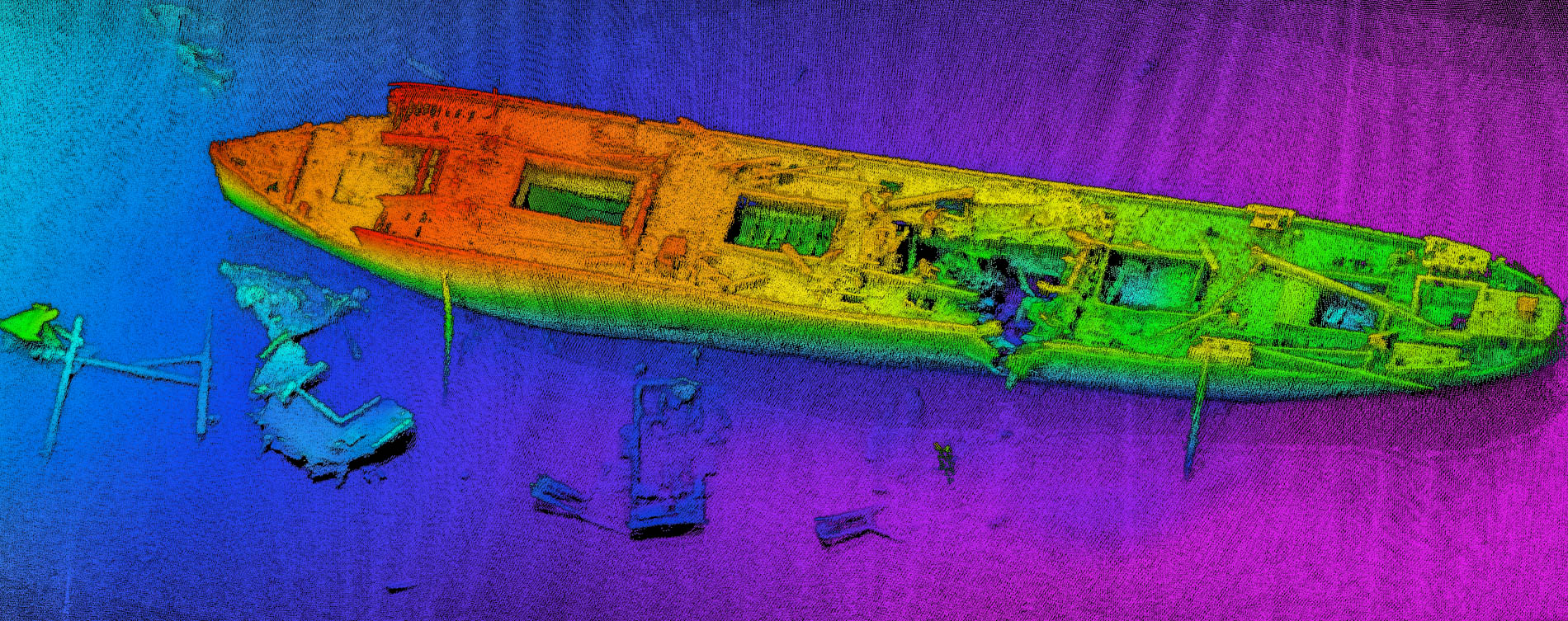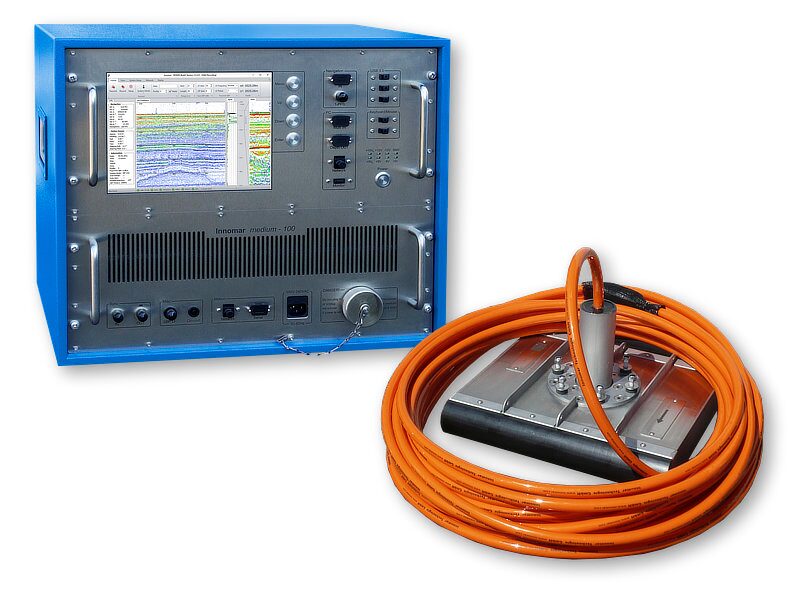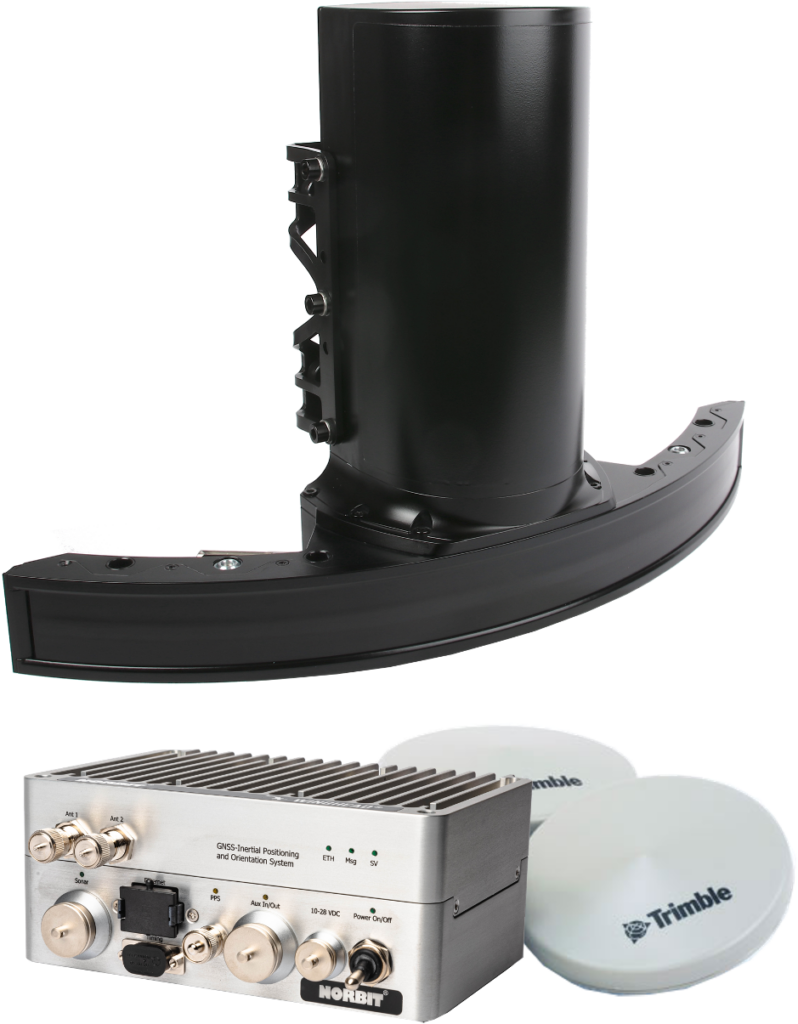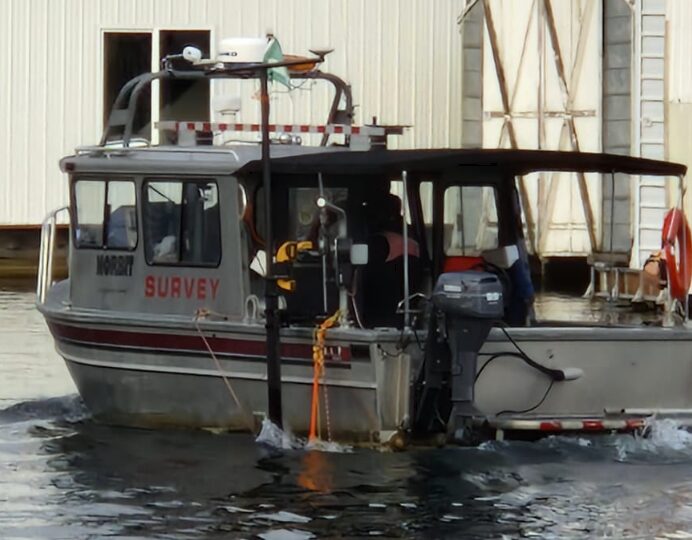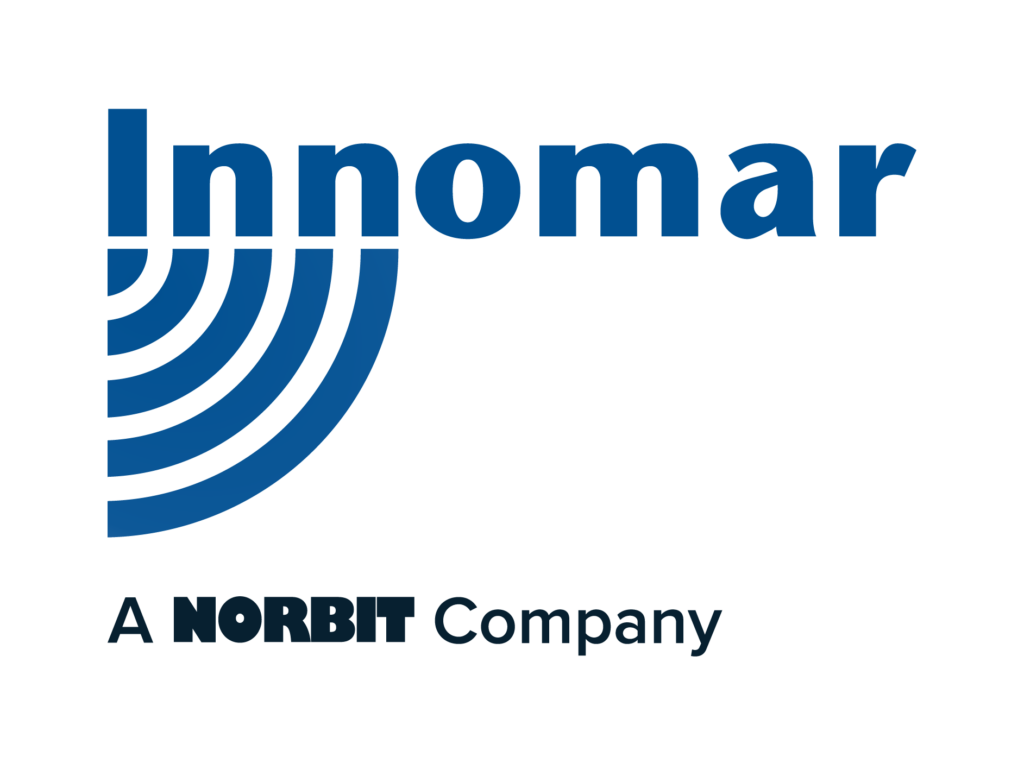Introduction: This case study examines the depth of burial survey of natural gas pipelines crossing the Columbia River near Portland, Oregon, using an Innomar medium-100 parametric sub-bottom profiler.
- This study demonstrates the capabilities of an Innomar parametric sub-bottom profiler system to detect buried pipelines in a river environment and determine their depth of burial
- A section of the Columbia River was surveyed with a few parallel lines (direction along the river) at water depths of 5 to 15 meters
- Additionally, the area was surveyed with a NORBIT WINGHEAD®i80S Long Range multi-beam system for high-resolution bathymetry.
Equipment used: - Innomar medium-100 parametric sub-bottom profiler
- NORBIT WINGHEAD®i80S Long Range featuring integrated Applanix Oceanmaster INS/GNSS and AML SV sensor
- NORBIT PORTUS pole mounted over the side on an 8m survey vessel
- AML-3 sound velocity profiler
Innomar medium-100 parametric sub-bottom profiler
The Innomar medium-100 system is a portable high-power and high-resolution sub-bottom profiler system. It utilises the technology of non-linear acoustics (i.e. parametric acoustics). This technology provides a narrow sound beam for low frequencies and very short transmit pulses without any ringing, for excellent vertical resolution and high ping rates, suitable for object detection applications.
- The system is portable and consists of a transducer (over-the-side, bow or moonpool mountable) and a transceiver (19” with 9 HE) containing transmitter, receiver and a control PC running MS Windows for setup, interfacing and data storage
- The primary high frequency is 100 kHz (used for bathymetry measurements) and the secondary low frequency is user adjustable during operation between 4 and 15 kHz (used for penetrating the sediments)
- The sound beam is as narrow as 3 degrees (valid for both the high and low frequencies) and actively stabilized for transmission and reception in real-time
- The system can be operated in water depths from about 1 m down to 2.000 m
- Depending on the water depth the ping rates can be as high as 40 pings per second
NORBIT WINGHEAD®i80S Long Range
The WINGHEAD®i80S LR is a compact, fully integrated multibeam survey system offering 0.5×0.9° beam widths at 400kHz and 1.0×1.8° at 200kHz.
- The sonar is frequency agile from 200-700kHz.
- It generates 1024 dynamically focused beams per ping.
- Up to 600m range performance.
- The IMU is tightly embedded within the sonar head.
- NORBIT’s steerable transmission technology provides full motion stabilisation (roll, pitch and yaw) to ensure uniform sounding coverage in dynamic sea states.
- Dual Swath provides up to 2048 beams, allowing higher sounding density and reduced survey time.
- The system weighs 8.0kg in air and connects to a compact topside unit via a single cable, allowing rapid mobilisation.
Installation
The Innomar medium-100 transducer was mounted over-the-side on NORBIT’s survey vessel “SheHorse”, using the NORBIT PORTUS mounting pole. The transceiver was rapidly mobilised, connected to the INS/GNSS with a network cable, and configured via the NORBIT GUI. The INS/GNSS provides RTK corrected position, roll/pitch/heave/heading data for the sub-bottom profiler for real-time beam stabilisation, heave correction and time stamping. The Innomar medium-100 does not require any calibration prior to the survey. The speed of sound was set to 1500 m/s, and all given depth values are related to this velocity.
Acoustic parameters were set up as follows:
- Transmit frequency of 8 kHz (low frequency channel)
- Signal length of 125 µs (equal to the length of a single sinus cycle of 8 kHz)
- Recording range window from 5 to 25 m below the transducer (provides a ping rate of c. 25 pings per second)
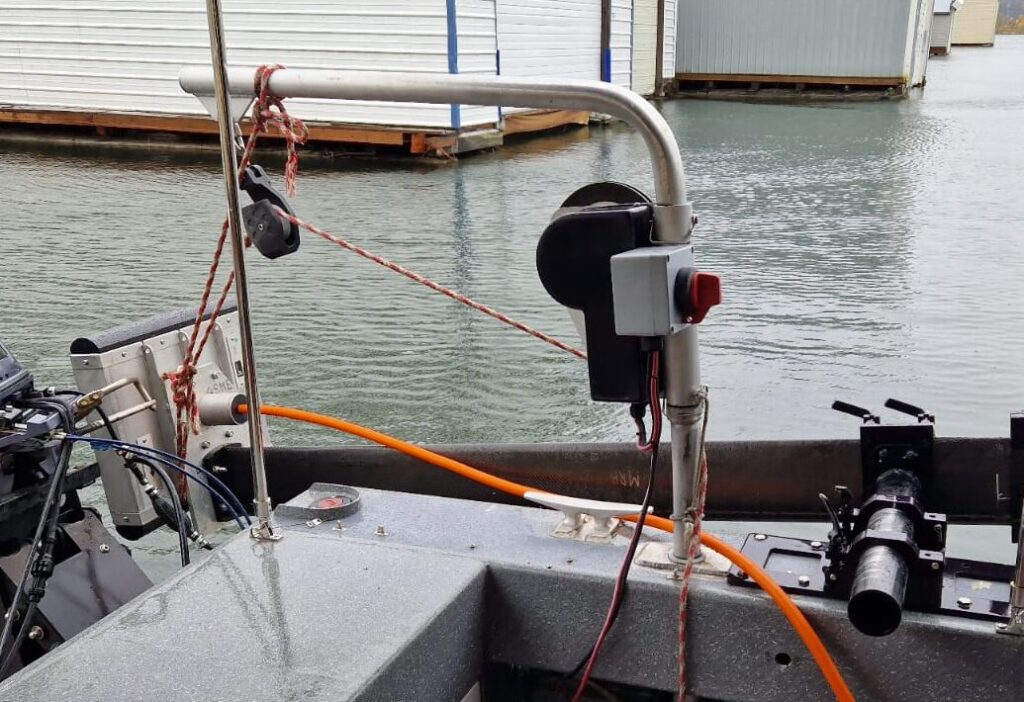
Results
A pair of natural gas pipelines with a diameter of c. 16” and another c. 14” pipeline to the south are crossing the Columbia River near Portland. The riverbed consists of sandy sediments forming sand ripples and sand dunes of various dimensions. The strong currents are constantly changing the riverbed morphology, causing a high complexity of the strata. Penetration into the sediments was in the range of 10m, but this application focused on the upper part of the strata where the pipelines are buried. Due to the short transmit pulses obtained by the parametric transmission, the achieved vertical resolution was c. 10 cm (i.e. layer-to-layer resolution).
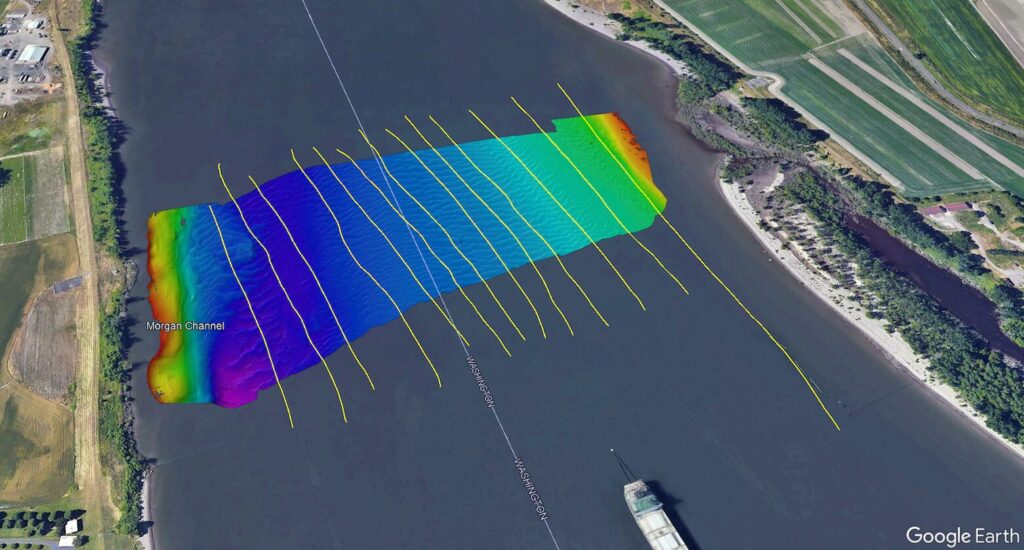
Typically, pipelines or similar features are detected by the appearance of hyperbolic reflections because approaching and retreating the target effectively changes the travel time of the sound waves between the transducer and the target with a hyperbolic function. The burial depth of the pipelines was in the range of about 1m to 4m below the riverbed.
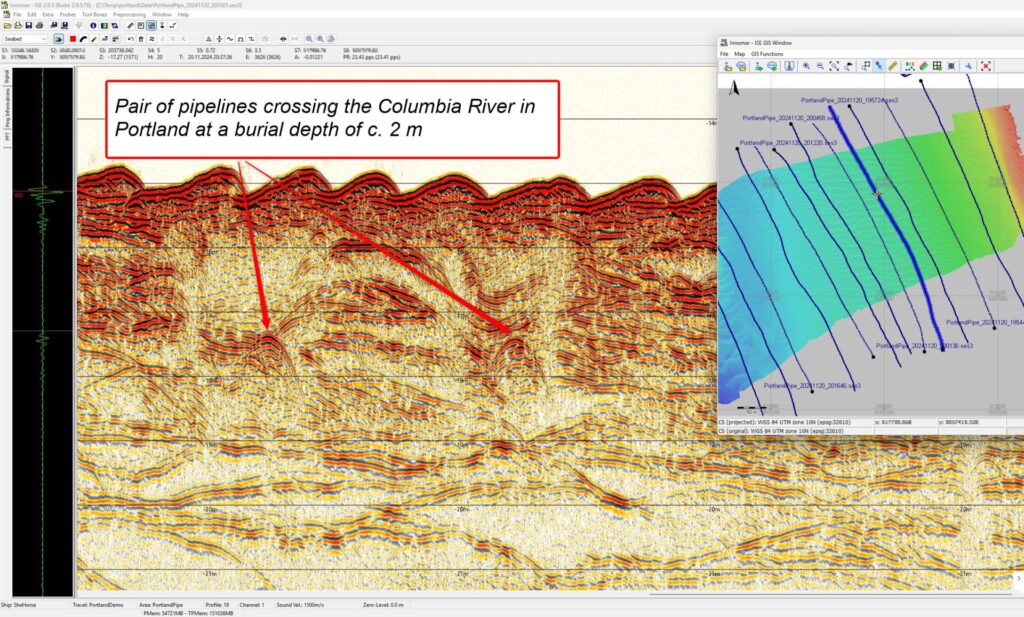
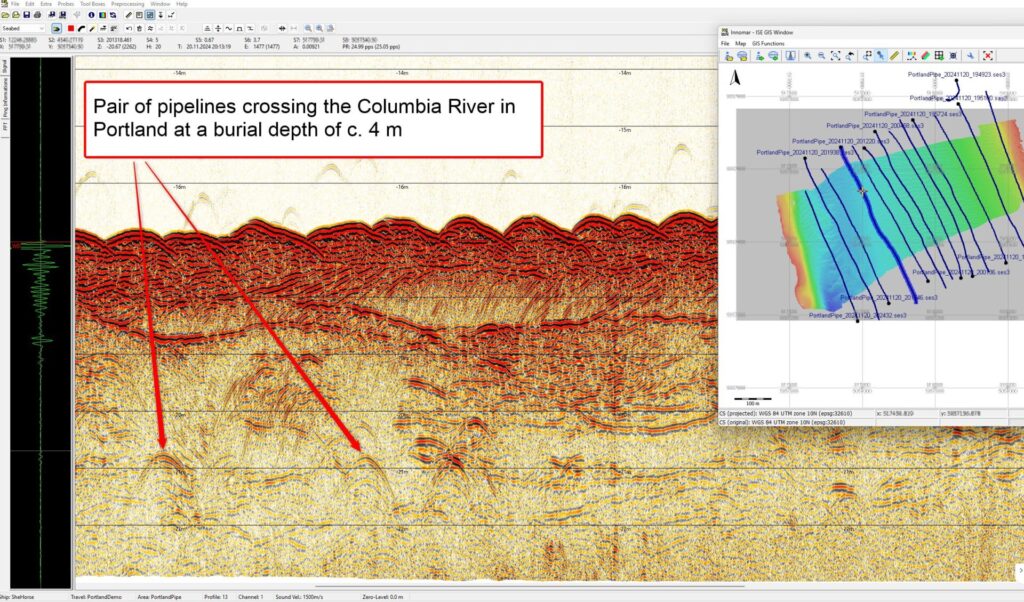
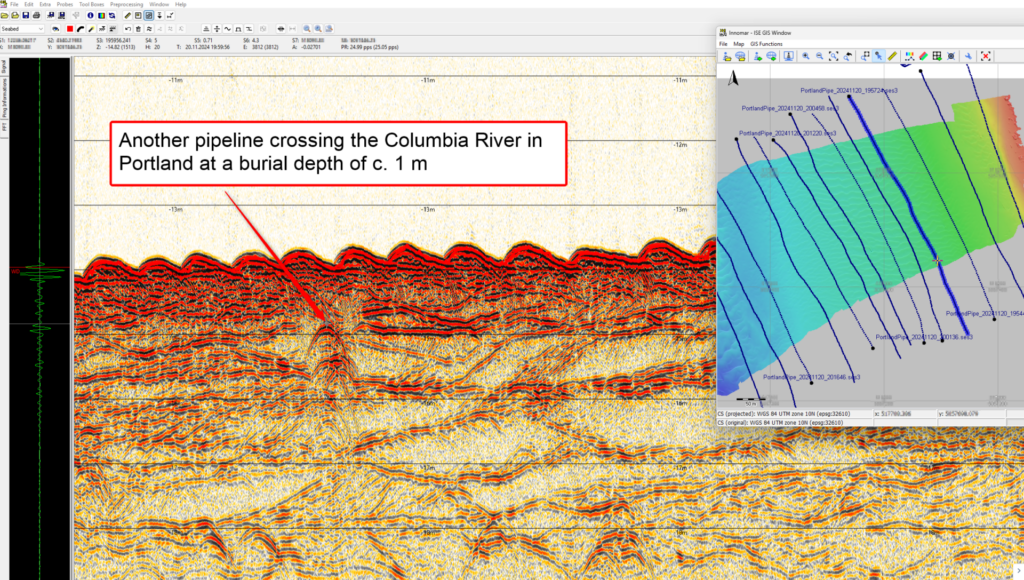
Data processing and visualisation
Data were processed in Innomar’s in-house developed ISE software, but conversion to the industry’s standard format SEG-Y and processing with any 3rd party software would also be feasible. Data are already band-pass filtered by the system itself, and no additional filters or complicated seismic processing steps are required. Hyperbolas are detected and interpreted visually by the human eye. The detected hyperbolic reflectors related to the pipelines are picked with a mouse and exported as XYZ ASCII data. Such exported ASCII data are easy to import into any GIS application or third-party software for mapping or visualisation purposes. QPS Fledermaus software was used to generate a 3D representation of the acquired MBES data set, the vertical 2D seismic sections (also called seismic curtains) and the picked pipelines. Pipeline diameters are not shown to scale in the 3D view, just the top of the pipelines, so the hyperbolic features in the seismic sections remain visible.
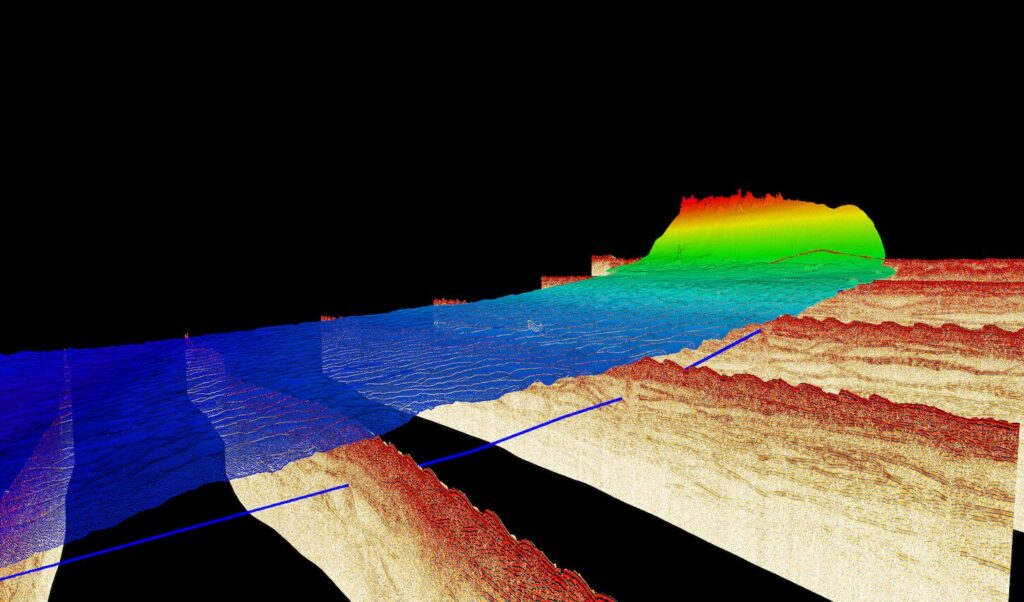
Conclusions
The Innomar medium-100 parametric sub-bottom profiler system is an excellent tool for the application of depth of burial measurements for pipelines and cables.
- The system is portable and can be mounted and operated from small survey platforms with simple over-the-side installations
- It can easily be interfaced with existing integrated NORBIT multi-beam solutions or standalone INS/GNSS systems
- No extensive seismic processing is required; hyperbolas are picked visually and exported into XYZ ASCII data, ready for any charting or GIS software.
